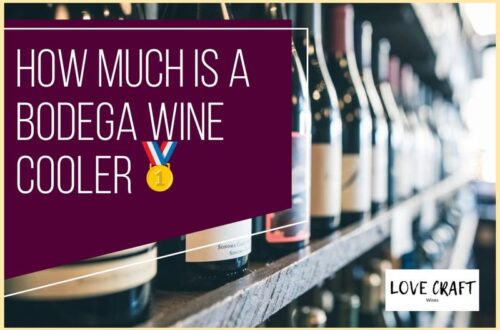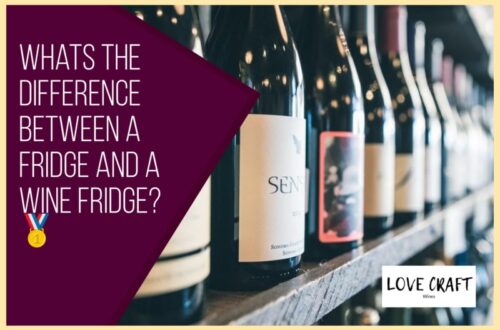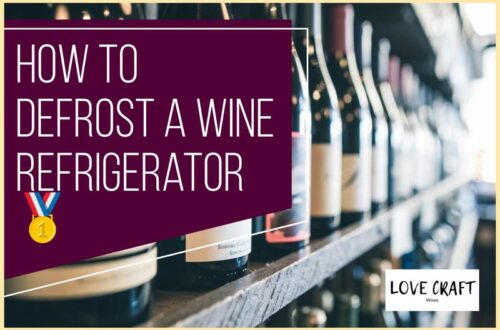Are you a wine lover who enjoys a bold and boozy glass of vino? If so, you may be interested in exploring some of the highest alcohol content wines available.
These wines typically have an alcohol by volume (ABV) of 15% or higher, which can provide a warm and intense sensation when consumed.
Understanding the factors that contribute to high alcohol content in wine can help you identify varietals that meet your taste preferences.
Grapes with high sugar content, production methods that encourage the concentration of sugars and alcohol, and certain varietals all play a role in creating high ABV wines.
In this article, we’ll explore some of the top high alcohol content wines and provide tasting notes and pairing suggestions to help you make the most of your wine experience.
Table of Contents
Understanding Alcohol Content in Wine
Get ready to learn about the boozy side of wine – we’re diving into how alcohol levels can affect your glass.
Alcohol content is measured in ABV or alcohol by volume measurement. This percentage indicates how much alcohol is in the wine relative to the total volume. Most wines have an ABV of 11-13%, but some can go as high as 20%.
The alcohol content in wine has a significant impact on its flavor and body. Wines with high alcohol content tend to have a fuller, richer body and a sweeter, fruitier flavor. On the other hand, wines with low alcohol content are lighter in body and have a more subtle flavor profile.
As a wine’s alcohol content increases, its tannins also become more pronounced, which can affect its overall balance.
Now, let’s move on to the next step, exploring grapes with high sugar content.
Grapes with High Sugar Content
Like the sun-ripened fruits of summer, grapes with high sugar content are the sweet nectar that brings depth and complexity to a fine wine. These grapes are usually the result of drying techniques such as appassimento or passerillage, which concentrates the sugar content in the grapes.
Appassimento involves drying the grapes on mats, while passerillage allows the grapes to dry naturally on the vine. The resulting grapes have a higher concentration of sugar, which leads to a higher alcohol content in the wine.
Fermentation processes also play a key role in producing high alcohol content wines. The yeast used in fermentation consumes the sugar in the grapes and converts it into alcohol. However, when there is a high sugar concentration, the yeast may not be able to convert all of it into alcohol, resulting in a sweeter and higher alcohol content wine.
Understanding these grape varieties and fermentation processes can help you appreciate and identify high alcohol wines.
Production Methods for High Alcohol Wines
You’ll learn about how winemakers create potent and rich wines by utilizing specific production methods, resulting in a flavor that packs a punch and leaves a lasting impression on your tastebuds.
Distillation techniques are often used to increase the alcohol content of a wine, such as in the case of brandy. This process involves heating the wine to separate the alcohol from the water and other components, resulting in a concentrated and potent liquid.
Another method is to add spirits, such as brandy or vodka, to the wine during the fermentation process, creating a fortified wine with a higher alcohol content.
Winemakers can also manipulate the grape growing and harvesting process to produce high alcohol wines. For example, allowing the grapes to hang on the vine for a longer period of time can result in a higher sugar content, which leads to a higher alcohol content during fermentation.
Additionally, certain grape varietals are naturally higher in sugar and therefore alcohol, such as Zinfandel and Syrah. By combining these techniques and utilizing high sugar grapes, winemakers can create wines with an alcohol content reaching up to 20% or more.
Exploring High Alcohol Varietals
If you’re a fan of bold and intense flavors, then exploring high alcohol varietals might be just what you need to add some excitement to your wine collection.
But have you ever wondered which grape varietals produce the highest ABV wines? Some of the most common high alcohol varietals include Zinfandel, Shiraz, Grenache, and Syrah. These grapes are known for their high sugar content, which results in higher alcohol content during fermentation.
Zinfandel, for instance, has a reputation for producing high alcohol wines with fruit characteristics like blackberry, raspberry, and plum.
Shiraz, on the other hand, is known for its bold black fruit flavors and aging potential. Grenache is a grape that produces wines with high alcohol content and a spicy kick, while Syrah is known for its full-bodied, fruity profile with a hint of black pepper. With these varietals, you can expect to indulge in a rich, full-bodied experience that will leave you wanting more.
And when it comes to tasting notes and pairing suggestions, high alcohol wines are best enjoyed with bold, flavorful foods like grilled meats, roasted vegetables, and rich, creamy sauces. The high alcohol content in these wines pairs well with the bold flavors of spicy and savory dishes, making them the perfect accompaniment to a hearty meal.
Whether you’re a seasoned wine enthusiast or just looking to try something new, exploring high alcohol varietals is a great way to add some excitement to your wine collection.
Tasting Notes and Pairing Suggestions
Indulge in the bold flavors of grilled meats and roasted vegetables, complemented by the full-bodied profile and spicy kick of high ABV varietals like Zinfandel, Shiraz, Grenache, and Syrah, with the perfect tasting notes and pairing suggestions to elevate your wine experience.
When tasting high alcohol content wines, it’s important to use proper tasting techniques to fully appreciate the complex flavors and aromas. Take a moment to observe the color, swirl the wine to unlock the bouquet, and then take a sip, allowing the wine to coat your entire palate before swallowing.
For a perfect food pairing, try a juicy grilled steak with a glass of Zinfandel or a spicy beef stir-fry with a bold Shiraz. Grenache and Syrah are also great options for pairing with grilled meats, but they also pair well with hearty stews and savory roasted vegetables.
The high alcohol content of these wines can stand up to strong flavors and spices, making them a perfect addition to any bold and flavorful meal.
Frequently Asked Questions
Is it safe to consume high alcohol content wines?
Like a high-speed rollercoaster, high alcohol content wines can be exciting and thrilling, but also potentially dangerous if not approached with caution.
When it comes to taste preference, some wine lovers enjoy the bold flavors and intense aroma that come with higher alcohol content, while others may find it overwhelming and unpleasant.
However, it’s important to remember that safe consumption is key, and moderation is key to avoiding negative health effects. While there is no definitive answer to what is considered a ‘safe’ alcohol content level in wine, it’s generally recommended to stick to wines with an alcohol content of 14% or lower, and to limit consumption to no more than one or two glasses per day.
As with any alcoholic beverage, it’s always best to approach high alcohol content wines with a responsible and informed mindset.
What are some common health risks associated with drinking high alcohol content wines?
If you’re a wine lover, you might have come across high alcohol content wines. While they may seem like a great way to unwind after a long day, they come with their fair share of health risks.
High alcohol content wines can lead to dehydration, headaches, and even nausea. It’s important to note that the higher the alcohol content, the more likely you are to experience a hangover the next day.
However, there are a few ways to mitigate these risks. First, you can pair your high alcohol content wine with food to slow down the absorption of alcohol in your bloodstream. Additionally, you can stay hydrated by drinking plenty of water before, during, and after consuming wine.
Ultimately, it’s up to you to decide whether the potential risks outweigh the benefits of consuming high alcohol content wines.
How does alcohol content affect the aging process of wine?
When you’re storing wine, it’s important to consider the alcohol content, as it can affect the aging process.
Wines with higher alcohol content tend to have lower acidity, which can impact their stability over time.
This means that if you’re looking to age a wine with high alcohol content, it’s important to store it properly to ensure its stability.
Make sure to keep the wine in a cool, dark place, away from light and heat sources, and to store it on its side to keep the cork moist.
By taking these precautions, you can ensure that your high-alcohol wines will age gracefully and develop complex flavors over time.
Can high alcohol content wines be considered as dessert wines?
Looking for dessert wine alternatives? Consider pairing high alcohol wines with sweet desserts.
While high alcohol content wines aren’t traditionally considered dessert wines, they can make for a unique and delicious pairing. For example, a high alcohol Zinfandel or Port can be paired with chocolate or caramel-based desserts.
The sweetness of the dessert will balance out the heat and intensity of the alcohol in the wine, creating a harmonious flavor profile. Keep in mind that high alcohol wines should be enjoyed in moderation, as their potency can be overwhelming and may not be suitable for all palates.
Are there any non-alcoholic options available for those who prefer high sugar content in their wines?
Looking for non-alcoholic alternatives to satisfy your sweet tooth? You’re not alone.
In fact, according to a recent survey, 30% of wine drinkers are interested in non-alcoholic wine options.
Luckily, there are a variety of sweet wine alternatives available that don’t contain alcohol. Some popular options include grape juice, sparkling cider, and non-alcoholic wine varieties.
These alternatives offer the same sweet taste and aroma as traditional wines, without the added alcohol content.
So, whether you’re looking for a refreshing drink to enjoy on a hot summer day or a sweet treat to pair with your favorite dessert, there are plenty of non-alcoholic options to choose from.
Conclusion
Congratulations! You’re now well-versed in the world of high alcohol content wines.
Remember that these powerful wines aren’t for the faint-hearted, but for those who seek adventure in every sip. They possess the ability to take you on a journey, transporting you to distant lands and filling your senses with rich aromas and flavors.
So go ahead, take a chance and try one of these high alcohol wines, and you may just be surprised with the depth and complexity they offer.
Just be sure to pair them with bold, hearty dishes that can stand up to their intensity.
Cheers to the bold and daring, and may your wine glass always be filled with adventure!





